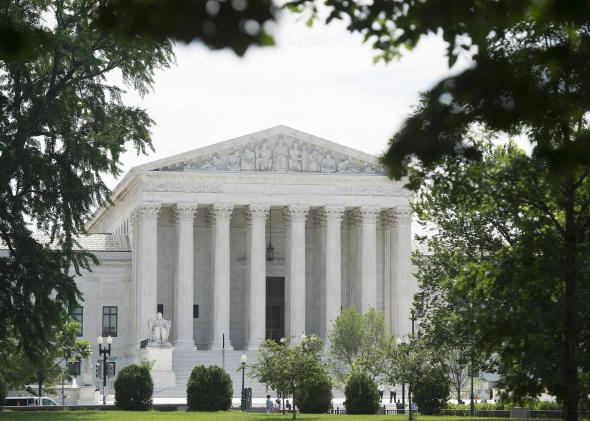Although there are 11 cases still outstanding on the Supreme Court’s docket following Thursday’s decisions, someone reading recent coverage of the court could be forgiven for thinking there are only two cases the court has yet to decide this term: Obamacare tax credits and gay marriage. This is nothing new. Every year the court decides roughly 70 cases, but the coverage of two or three often crowds out the rest, making the work of an already opaque institution even less visible to the public. That’s why it’s worth remembering that even though marriage and health care may be the biggest cases the court will decide over the next few weeks, they’re hardly the only important ones. As I and others have written, the legacy of Chief Justice John Roberts and of his court will be shaped by where they land on these two cases. But many of the other cases the court will be deciding over the next few weeks could be incredibly consequential as well. And they, too, will help define the legacy of Roberts and his court.
Consider, for example, Michigan v. Environmental Protection Agency, which presents a challenge to the EPA’s regulations involving the emissions of hazardous air pollutants from certain power plants. Challengers to the rule have argued that the EPA acted improperly by considering the costs of the regulation when it was setting emission standards, rather than when it was making the initial decision to regulate. The court below concluded that the rule was “clearly permissible,” but the Roberts court’s record on the environment has been mixed, at best. There’s reason to hope for a good outcome in this case—the EPA’s regulatory approach is completely consistent with the requirements of the statute, and the environmental community scored two important wins at the court last year. But if the court rules against the EPA, the consequences will be significant. Indeed, lives are on the line when it comes to this case just as much as they are with the health care case because the public health benefits of the EPA rule are enormous. It will save up to 11,000 lives per year.
Or take another example, Texas Department of Housing and Community Affairs v. the Inclusive Communities Project Inc., a case about the meaning of the Fair Housing Act. The Fair Housing Act was passed a week after Martin Luther King Jr.’s assassination in tribute to one of his final campaigns, and it is one of the most important civil rights laws in the country. It prohibits racial discrimination in housing in order to ensure fair housing throughout the country and eliminate racial segregation. The question before the court is whether the statute prohibits only acts that are intentionally discriminatory, or also those that have a disproportionate effect on the basis of race. It’s a critically important question because it goes to the heart of the law’s ability to achieve its purpose; after all, intentional discrimination may be on the decline, but lots of housing policies that have a disparate impact on the basis of race remain, and they contribute to residential segregation and unequal access to housing. The text and history of the law make clear that it should prohibit policies with a disparate impact—indeed, every court of appeals to have considered this issue has concluded that it does—but there’s reason to be nervous. When it comes to cases involving race, the records of Roberts and his court aren’t good. Moreover, only Justice Anthony Kennedy has not written an opinion from cases heard around the same time as this case, which means he is likely writing the opinion—and, based on his prior votes in this area of law, that’s not a good sign either. The impact if the court concludes that the statute only prohibits intentional discrimination will be huge.
And, as one final example, there’s Arizona State Legislature v. Arizona Independent Redistricting Commission, which asks the court to decide the fate of nonpartisan redistricting commissions. Those are the commissions that some states have started using to take self-interested state legislatures out of the redistricting process. The specific question the court is answering is whether the Constitution’s Elections Clause prohibits states from redistricting in this way. The court’s answer could have a huge impact on congressional district lines, which could in turn affect the composition of the House of Representatives. In other words, this little-discussed Supreme Court decision could affect who goes to Washington to sit in Congress and make (at least in theory) laws for the nation.
Those are just three examples of cases the court will be deciding over the next few weeks that have received far less attention than they deserve. The impact of these cases on individual lives’ may be less direct or obvious than in the case of health care or marriage, but it’s no less real. So as you wait to hear what the court will decide in the marriage and health care cases at the end of the month, it’s worth paying attention to the other cases it’s deciding in the meantime. They might be a lot more significant than you think.
